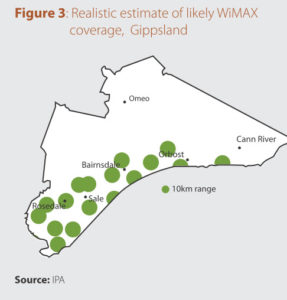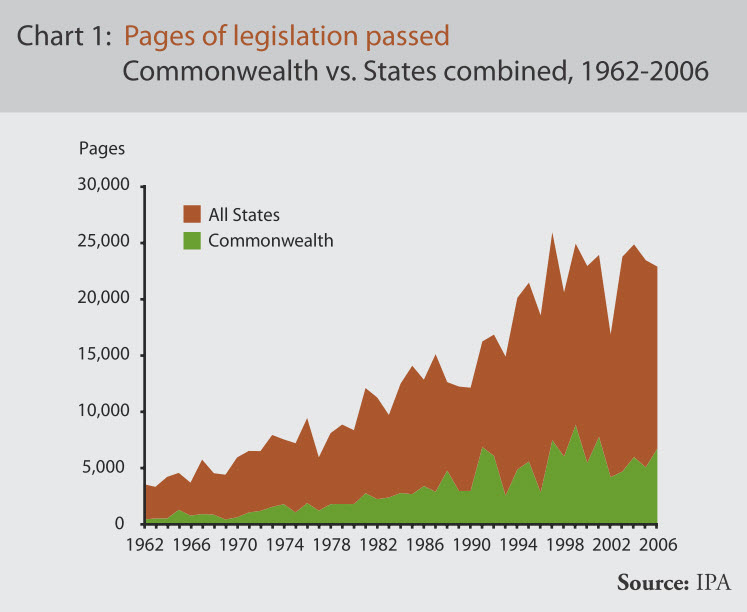With Hugh Tobin
If the people who watch Big Brother are so stupid, why do we allow them to vote? After all, the cultural criticism of reality television is, implicitly, a criticism of its audience.
The political condemnation which has greeted a series of reality television controversies could easily backfire. The series is simple entertainment, but it is entertainment designed to reflect the social lives and concerns of its audience. There is more to Big Brother than voyeurism.
Nevertheless, in June this year, the cultural pessimists who have made sport of condemning the reality television genre were provided with yet another target for their concentrated hysteria. A new Dutch reality television programme, The Big Donor Show, starred a terminally ill woman with a kidney to donate. Three potential donor recipients were to compete for the life-saving organ. (The programme’s logo tastefully featured a drawing of a kidney in place of the final ‘o’ of ‘donor’.)
Of course, it was a stunt, designed to highlight the shortage of organ donors in the Netherlands and, indeed, around the world. The conservative politicians who had been quick to condemn the programme and call for its censorship awkwardly tried to back away.
The show may have been designed to attract attention to the shortage of organ donors, but the politicians who instinctively shot from the hip illustrated just how highly politicised reality television has become. Reality television attracts vehement criticism—criticism about its supposed emphasis on sex, its voyeurism, its artlessness, and its seeming appeal to the lowest common denominator.
On the surface, many of these objections seem unfounded. Artless voyeurism and sexual innuendo have not merely been a prominent feature of the history of television, but probably a big source of the medium’s popularity. Reality television, then, is simply another genre of entertainment, and should be judged by the same standards as ‘traditional’ genres such as sport or drama. Putting aside the intellectual snobbery adopted by culturally conservative politicians, there’s nothing harmful about a bit of trash TV.
The success of the Dutch kidney donor stunt was only made possible by exploiting the instant notoriety with which reality television has become synonymous. And just as in the Netherlands, over-zealous Australian politicians have rushed to condemn the tone and content of the genre. But the political response in Australia has gone much further than simple statements to the press. The knee-jerk reaction to a series of reality television scandals has led to a major regulatory expansion for online content and delivery.
The controversy surrounding Big Brother in mid-2006 has inspired the federal government to increase the powers of the Australian Communications and Media Authority (ACMA) to police mobile phone and online content. A hastily written piece of legislation now urges the regulator to develop industry standards for the entire Australian internet community, as well as enforce the removal of ‘objectionable’ material here and overseas.
Vague borders
It’s no surprise that Big Donor would originate in the Netherlands. Endemol, the production company which produced the stunt, was one of the major companies responsible for the modern wave of reality television. It produced the first series of Big Brother which aired in 1999 on Dutch commercial television.
The first of the Survivor franchise was aired in Sweden in 1997 as Expedition: Robinson, and 19 Entertainment’s Idol format began in 2001 with its UK series, Pop Idol. These have all been franchised internationally: there are now 95 different winners of the Idol series around the world, and more than 160 winners of Big Brother.
But reality television, a loose genre which presents largely unscripted non-actors in various contrived situations, has a long history. 1948 — the same year in which George Orwell wrote Nineteen Eighty-Four — also saw the first television broadcast of Candid Camera, the long-running and influential concealed camera show which pioneered the genre.
The borders of reality television are unclear. The genre borders upon documentary filmmaking — programmes such as the US’s COPS and Australia’s Border Security, or ‘celebreality’ shows, such as The Osbournes and Newlyweds: Nick and Jessica, document the daily lives of non-actors. The Seven Up! Series — the latest episode of which was reviewed in the December 2006 edition of the IPA Review — also shares some similarities with this strand of the genre.
What constitutes ‘reality’ television is often a matter of degree — many of the staples of the genre have close affinities with more traditional programme formats. Like a game show, the participants in Big Brother compete against each other for a prize, as do contestants in the Idol and Survivor formats. Talk shows such as the Jerry Springer Show have also sometimes been classified as part of the genre when they actively try to foment on-air drama between participants.
Much reality television blurs into fiction. The question of just how ‘real’ reality television is is made particularly problematic by shows such as Laguna Beach, which purports to follow a group of wealthy teenagers living in Orange County, California. Laguna Beach features a not-insignificant amount of scripting and ‘production manipulation’.
Scandal and controversy have accompanied reality television since its early days — reality television has been a more powerful conduit for debate about social and cultural issues than any number of high-minded, preachy Hollywood films. In the 1973 US series An American Family, which centred around a family experiencing a divorce, the eldest child’s homosexuality was the lightning rod for controversy.
In 1992’s Sylvania Waters, a series which filmed an Australian family, the perceived and real alcoholism, racism, and materialism of the Laurie Donaher/Noeline Baker de facto family drew much criticism. The Sun headlined its story on the series when it debuted in the UK: ‘Meet Noeline. By Tonight You’ll Hate Her Too’.
The most controversial programmes, however, have been those which have placed participants in special living environments. MTV’s The Real World has, since 1992, placed participants together in an urban house and given them jobs and group activities. Tensions and arguments over race and sexual orientations have been a recurring theme throughout the series.
Politics and Big Brother
Unsurprisingly, the Big Brother franchise has a tradition of controversy. Last year’s accusations of racism in the UK Celebrity Big Brother gained the British series world-wide attention. Politicians who have been so eager for the limelight that they have volunteered as participants have come under heavy public fire. The Scottish MP George Galloway thought that the best way to capitalise on his notoriety after being accused of Iraqi Oil-for-Food corruption was to appear on the 2006 edition of Celebrity Big Brother. The minority whip of the Mexican Green Party also participated in a 2004 Mexican Big Brother, to much political criticism.
The Australian Big Brother may not have featured any politicians as housemates yet, but the franchise has been readily embraced as a political totem. Beginning in 2001, early Australian seasons of Big Brother were aired with relatively little controversy. 2003 saw a small incident as one housemate identified a minor in an ongoing court trial — the producers frantically shut down the live Internet feeds and official Website discussion boards. A 2004 contestant staged a silent protest upon his eviction from the house, taping his mouth shut and holding up a banner reading ‘Free th refugees’ (sic), to the consternation of producers who had planned the usual extensive post-eviction interview.
The Dutch production company which developed the Big Brother format originally conceived as few as six contestants locked up in a house for a year. The format was partly inspired by the early Webcam movement, a late 1990s’ trend where exhibitionists document a usually unedited video stream of their lives onto the Internet, including sexual encounters.
And it is this lineage of total surveillance and exhibitionism that has provided the source of the major controversy. The 2005 series’ emphasis on the sex appeal of the housemates, in particular the weekly 9.40pm ‘Uncut’ programme which presented material not appropriate for the 7pm ‘Daily Show’, was a focal point of political condemnation. ‘Uncut’ featured, for the most part, conversations about the sex lives of the housemates, shower scene footage, and general playing around.
Following complaints from the Australian Family Association, Liberal MP Trish Draper condemned the programme as pornographic, arguing that the housemates have ‘an aspiration to be porn stars’. Big Brother participants are certainly exhibitionists, but it would undoubtedly be easier to get work on a porn film than become a housemate.
In 2005, ‘Uncut’ was the problem. Once the programme had attracted the attention of the Communications Minister, Helen Coonan, media regulators determined that the material chosen for broadcast was in breach of the free-to-air code of conduct. For the next year’s season the programme was retitled ‘Adults Only’ and the sexual content watered down. (Nevertheless, by June 2006, Channel Ten had succumbed to political pressure from government backbenchers and pulled the show; even though it was, as everybody acknowledged, firmly within the bounds of broadcasting regulations and the television industry’s code of conduct.)
But for Big Brother 2006, the biggest controversy wasn’t what was broadcast on free-to-air television. It was the Internet-only, subscription-only live feed which recorded the alleged sexual harassment by two contestants of a third female participant.
Steve Fielding of Family First led the critical charge of criticism at the show: ‘This show legitimises behaviour that is not acceptable anywhere in our community and this latest incident is disgusting and degrading and, quite frankly, this is not a community standard that’s acceptable … Family First is calling for Big Brother to be pulled’.
The Prime Minister also called Big Brother a ‘stupid program’, and the Communications Minister said that it was ‘disturbing and offensive’. Predictably, the ACMA was once again pulled back into the fray.
Whether the ACMA had jurisdiction over the online material was, however, uncertain. The incident was not broadcast on television. As the ACMA noted in its report, the footage wasn’t even stored on the Big Brother website — the site did not provide an archive of the feed. But enterprising subscribers had recorded it themselves, and the incident was soon viewable on video-sharing sites such as YouTube.
The ACMA’s report concluded that there was little the regulator could do about what was provided online. For the government this was an insufficiently dramatic political response to the August 2006 incident.
So now, in 2007, we have legislation which gives the ACMA that authority. The Communications Legislation Amendment (Content Services) Bill, which passed through parliament in late June, gives the regulator authority over ‘ephemeral’ content services such as Internet live feeds, as well as the power to regulate ‘convergent’ devices, such as mobile phones offering video or other content. But the importance of the new legislation is not limited to an expansion of the ACMA’s jurisdiction. The law places the regulator firmly at the centre of ascertaining the responsibility for content created and delivered on the internet.
The creation of content by Internet users, rather than professional content producers, has been one of the primary innovations in entertainment technology over the last decade. Sites such as YouTube provide a neutral distribution system for users to upload and broadcast that content. But the introduction of this legislation requires the site to police the material it hosts, rather than placing the responsibility with the producer of the material. As Microsoft has noted, this surpasses the high regulatory bar set by the European Union—an unfavourable comparison.
The high pace of innovation has blurred the distinction between forms of content and delivery—indeed, this is a good working definition of ‘convergence’. In an effort to translate the complex technological and cultural changes of the content industry, the legislation confuses and over-regulates.
For example, there are 22 exemptions to what is considered, for the purposes of the legislation, as a ‘content service’. Entrepreneurs eager to found their own YouTube killer in Australia will struggle to navigate the convoluted legal framework and liability issues. They will be doubly frustrated if they had originally been seduced by the federal government’s public desire to encourage a local content industry.
Between the audience and the activists
As has regularly been pointed out both by critics and contestants, ‘The Daily Show’ and ‘Uncut’/‘Adults Only’ programmes of Big Brother are not strictly ‘real’. Programme producers can cut and edit what is finally broadcast to direct or create narratives, play up potentially dramatic situations and even manipulate audience perceptions of individual housemates. But they have very little capacity to manipulate the live Internet feed.
What is shown live from the house is as close to ‘reality’ as audiences are likely to get from the artificial environment of Big Brother. If the programme’s original conceit was to broadcast the mundane lives of a group of people in an isolated house, then live streaming is the ultimate manifestation of that idea.
When politicians criticise or disparage the contestants on Big Brother, they implicitly criticise the (voting) audience.
In the UK, the programme’s audience is 58 per cent female, and 49 per cent are aged between 16 and 34. The Australian audience has a similar composition. The participants on most of the standard Big Brother series are deliberately chosen to replicate the likely audience.
This same demographic now spends more time online (38 per cent) than with any other entertainment medium. Again, the activity online provides an interesting parallel with the Big Brother format. This is the same generation that is likely to have a public profile on MySpace or Facebook, to record their daily activities publicly on services such as Twitter, to run a blog, to produce YouTube commentaries, or in some other way to participate in online discussions and forums.
Big Brother may be exhibitionism on the scale of free-to-air television, but the audience also practices their own smaller-scale exhibitionism online.
Politicians eager to court this key demographic should be wary of such instant point-scoring. The reactionary attitude of the political class to the genre is, particularly for young viewers, indicative of a failure to understand youth culture.
One recent paper in the International Journal of Cultural Studies has found that UK Big Brother viewers were, when assessing a politician, most likely to give their support to someone who they saw as an ‘ordinary’ person. The programme, this finding implies, is popular because the audience can relate to the housemates; and politics is unpopular because the participants are harder to relate to.
How individuals acted in the artificial environment of the Big Brother house was seen as a reliable guide to their personality and ability—a view that contrasts poorly with finely stage-managed political personas. The ‘Uncut’/‘Adults Only’ programme was both unfiltered titillation and a candid display of key aspects of the housemate’s personalities.
Endemol has itself encouraged the comparison between the programme and politics. The company’s UK division sponsored a 2003 study which contrasted what it saw as the typical Big Brother viewer — typically female, under 40, and largely uninterested in politics — with ‘Political Junkies’—male, 50-plus, professionals, who regularly discussed politics in social settings. Endemol’s UK chairman wrote in the study that the British government needed to replicate the most appealing aspects of Big Brother and ‘broaden its accountability, allowing the electorate more control via interactivity and thus earning more respect from the new generation of voters’.
Politicians should probably not apply to be housemates. George Galloway was, after all, voted out of the house early into the season. But the remarkably confused interpretation of the implications and importance of reality television and the internet has led Australian politicians to demonstrate just how little they understand this key demographic.
When the frills of Big Brother — the prize money, the weekly voting, the Friday-night games — are stripped away, the programme does nothing more than stick 14 young people in a house and watches what they do. They may be more attractive and extroverted than the norm, but they represent a cross-section of the social, political and economic make-up of their generation.
Politicians would do better to watch the show than to breathlessly condemn it.






